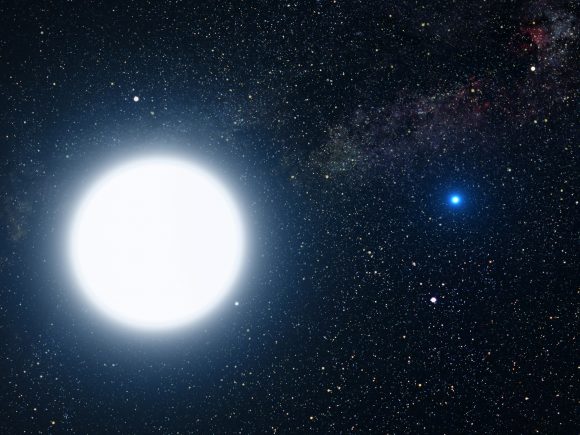


Artist’s impression of how an an Earth-like exoplanet might look. Credit: ESO.

A diagram depicting the Habitable Zone (HZ) boundaries, and how the boundaries are affected by star type. Credit: Wikipedia Commons/Chester Harman

Diagram showing GJ 625’s habitable zone in comparison’s to the Sun’s. Credit: IAC

Stellar temperature versus distance from the star compared to Earth for the classic habitable zone (shaded blue) and the volcanic habitable zone extension Credit: R. Ramirez, Carl Sagan Institute, Cornell

This illustration shows the a lower bound for habitability in terms of a planet’s mass. If an object is smaller than 2.7 percent the mass of Earth, its atmosphere will escape before it ever has the chance to develop surface liquid water (Illustration courtesy of Harvard SEAS).

An artist’s illustration of an exoplanet and its moon orbiting a red dwarf star. By NASA/Harvard-Smithsonian Center for Astrophysics/D. Aguilar –, Public Domain,

As it turns out, not only is Earth the right distance from the Sun to be habitable, but our planet is in the right mass range, too. Credit: NASA Goddard Space Flight Center

Looking to the future, NASA and other space agencies have high hopes for the field of extra-solar planet research. In the past decade, the number of known exoplanets has reached just shy of 4000, and many more are expected to be found once next-generations telescopes are put into service. And with so many exoplanets to study, research goals have slowly shifted away from the process of discovery and towards characterization.
We've found hundreds of exoplanets in the galaxy. But only a few of them have just the right combination of factors to hold life like Earth's.

The “Goldilocks” zone around a star is where a planet is neither too hot nor too cold to support liquid water. Credit: Petigura/UC Berkeley, Howard/UH-Manoa, Marcy/UC Berkeley.
Exoplanet Kepler 62f would need an atmosphere rich in carbon dioxide for water to be in liquid form. Artist’s Illustration: NASA Ames/JPL-Caltech/T. Pyle

Artist’s depiction of a waterworld. A new study suggests that Earth is in a minority when it comes to planets, and that most habitable planets may be greater than 90% ocean. Credit: David A. Aguilar (CfA)

Artist’s impression of Sirius A (a main-sequence type A star) and Sirius B (white dwarf companion). Credit: NASA, ESA and G. Bacon (STScI)

Artist’s concept of Earth-like exoplanets, which (according to new research) need to strike the careful balance between water and landmass. Credit: NASA